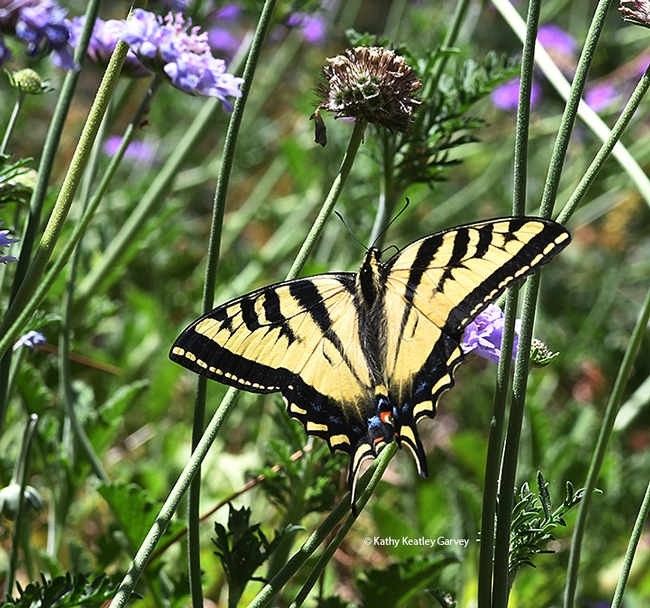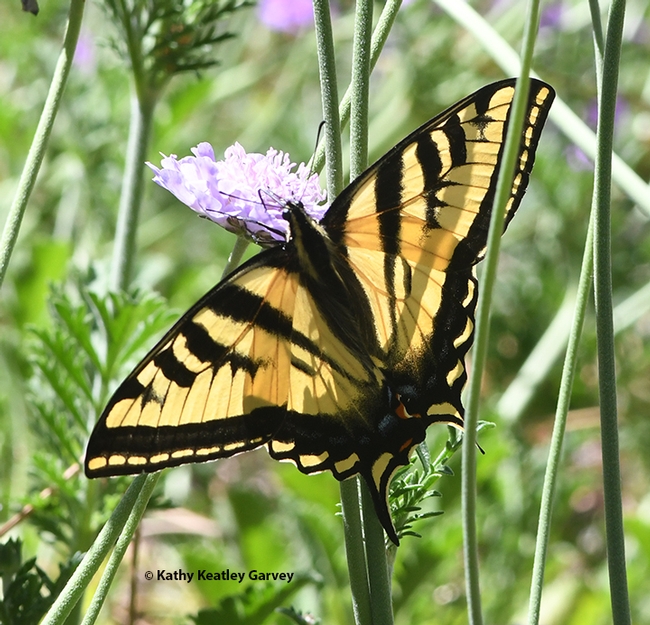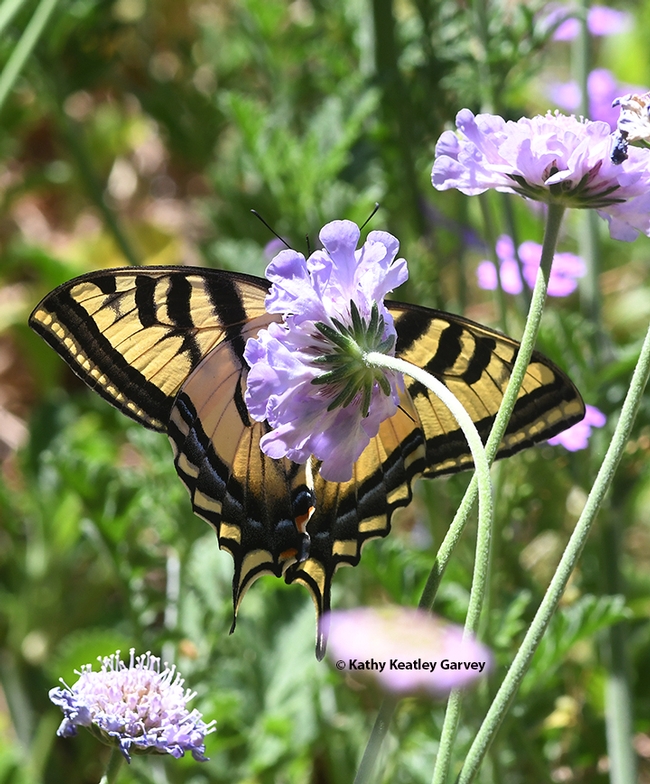- Author: Kathy Keatley Garvey
It's Day 3 of National Pollinator Week.
Fortunately, a tiger came to visit us--no, not the predatory jungle animal, Panthera tigris, but a newly emerged Western tiger swallowtail, Papilio rutulus.
This native butterfly is quite colorful, with black stripes accenting its brilliant yellow wings, and blue and orange spots gracing its tail. When it flutters into your garden, you stop everything you're doing and become a professional butterfly watcher until it leaves. It's the law, I think. Anyway, Western tiger swallowtails are almost hypnotic.
This fluttering tiger took a liking to our Mexican sunflower, Tithonia rotundifola, and was totally unaware of a tiny longhorned bee, a male Melissodes agilis, heading straight for it.
Pretend you're the butterfly. Here you are, newly emerged and you've discovered a patch of Tithonia offering delicious nectar! Heaven scent! Then you see a speedy little critter targeting you. He's not about to make a lane change. There's no garden patrol to monitor his speed or aggressive behavior. He's coming for you. He aims to hit you and dislodge you from your perch.
This little bee, in fact, targets all critters occupying "his" flowers. He isn't out to sting the floral occupants, as one reader surmised. It's a male bee, and boy bees can't sting. Nor is he fighting over pollen. Males do not collect pollen or nectar for their colony--the females do.
So what is he doing? He's trying to protect or save the floral resources for the females of the species so he can mate with them. The late Robbin Thorp, noted bee expert and distinguished emeritus professor of entomology at UC Davis, used to talk about these little guys bullying all the floral tenants--from Valley carpenter bees to majestic monarchs to praying mantids. Sometimes an unfortunate Melissodes winds up in the spiked forelegs of a mantis. Or in the clutches of a spider. Or in the beak of a bird.
It's a jungle out there. Sometimes it's the survival of the fittest. Or the flittest.
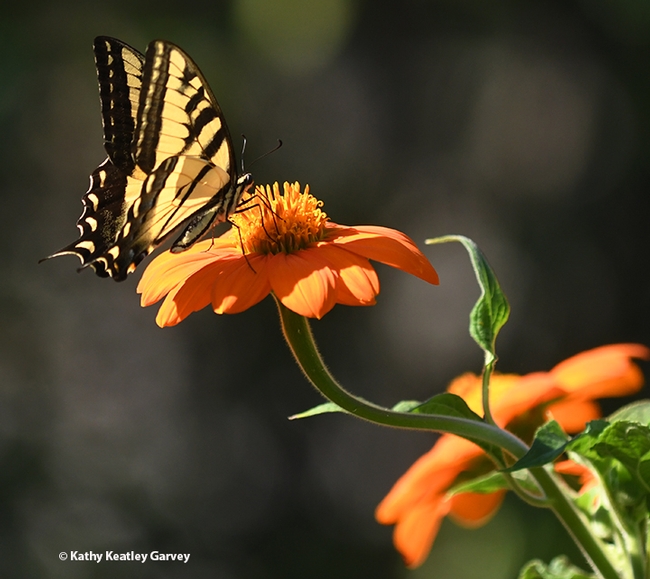
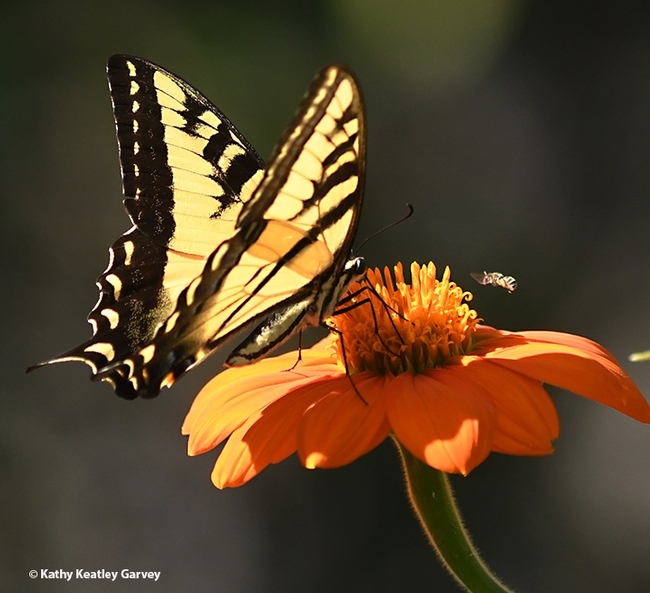
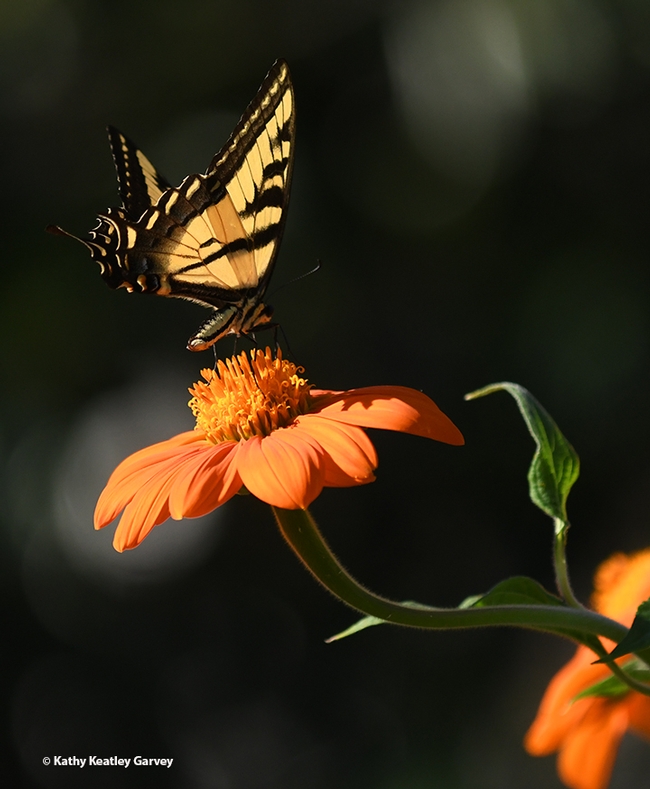
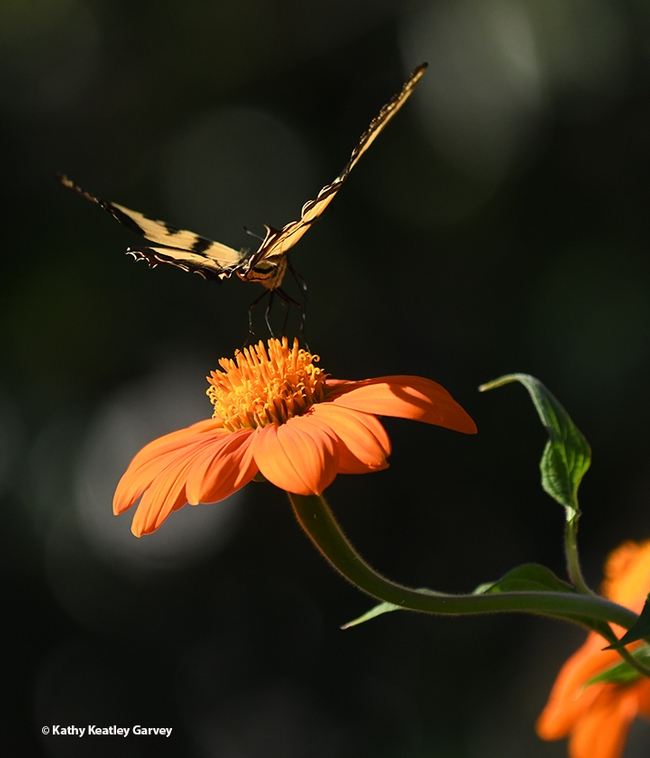
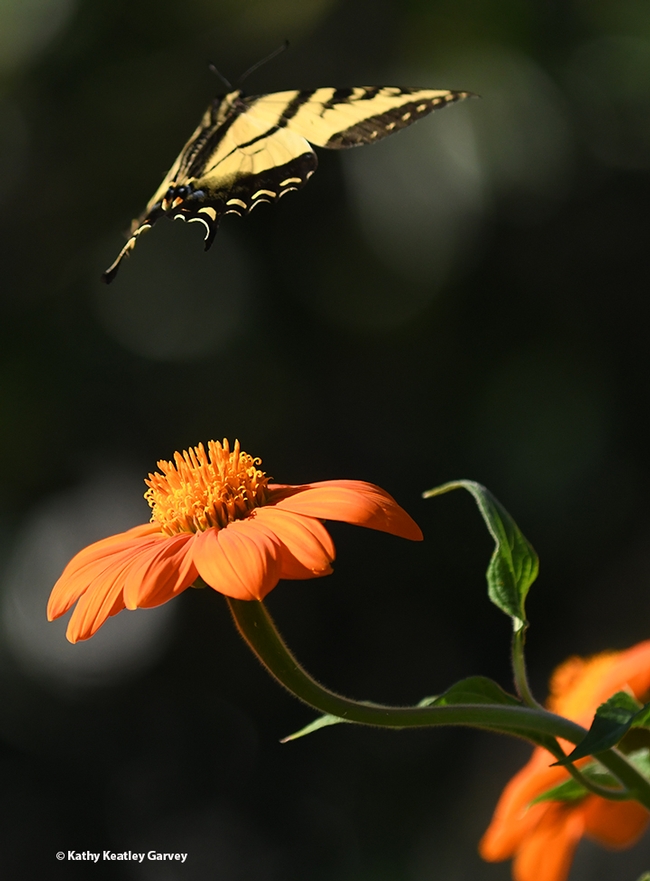
- Author: Kathy Keatley Garvey
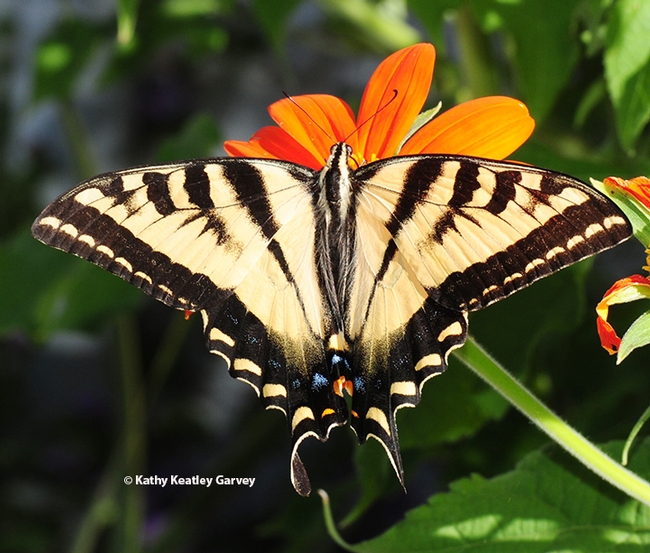
It's not "officially" spring until we see--and photograph--the spectacular Western tiger swallowtail, Papilio rutulus.
One landed March 30 on an aromatic white lilac bush in Alamo Creek Park, Vacaville. It lingered long enough for a few photos and then fluttered away.
Butterfly guru Art Shapiro, UC Davis distinguished professor, Department of Evolution and Ecology, saw his first Papilio rutulus of the year on March 4 in Davis. Butterfly enthusiast and naturalist Greg Kareofelas, an associate of the Bohart Museum of Entomology, UC Davis, saw his first on March 23, also in Davis, "and since then, I've been seeing them regularly."
This butterfly's wings are a brilliant yellow with black stripes. Blue and orange spots accent "the tails" on their hindwings. The one we saw in Vacaville was missing some of its "parts," probably due to a close encounter with a predator, maybe a California scrub jay seeking a quick meal.
Professor Shapiro writes on his website: "The Western Tiger Swallowtail is basically a species of riparian forest, where it glides majestically back and forth along the watercourse. It has expanded into older urban neighborhoods where several of its host genera are grown as shade trees, and behaves as if the street were a watercourse. In the high country and on the Sierran east slope its usual host is Aspen."
"One brood (June-July) at higher elevations; one and a partial second at Washington; 2-3 at lower elevations with a long flight season (late February or March-September or October). An avid puddler. Visits Yerba Santa, California Buckeye, Milkweed, Dogbane, Lilies, Coyotemint, etc., etc. and in gardens frequent at Lilac and Buddleia. Spring individuals are smaller and usually paler than summer. Low-elevation hosts include Sycamore (Platanus), Ash (Fraxinus), Cherry and other stone fruits (Prunus), Willow (Salix), Privet (Ligustrum), Lilac (Syringa) and (in Sacramento County) Sweet Gum (Liquidambar)."
Check out Shapiro's newly renovated website at https://butterfly.ucdavis.edu. The work of webmaster Dave Waetjen, it's a must-see and must-read. A colorful male monarch graces the home page.
Shapiro has monitored butterfly populations across central California for more than 45 years. It's part of his continuing effort to regularly monitor butterfly population trends on a transect across central California. "Ranging from the Sacramento River delta, through the Sacramento Valley and Sierra Nevada mountains, to the high desert of the western Great Basin, fixed routes at ten sites have been surveyed at approximately two-week intervals since as early as 1972. The sites represent the great biological, geological, and climatological diversity of central California."
And one of the species is the spectacular Western tiger swallowtail, which Shapiro monitors at all 10 of his sites.
Hello, spring!
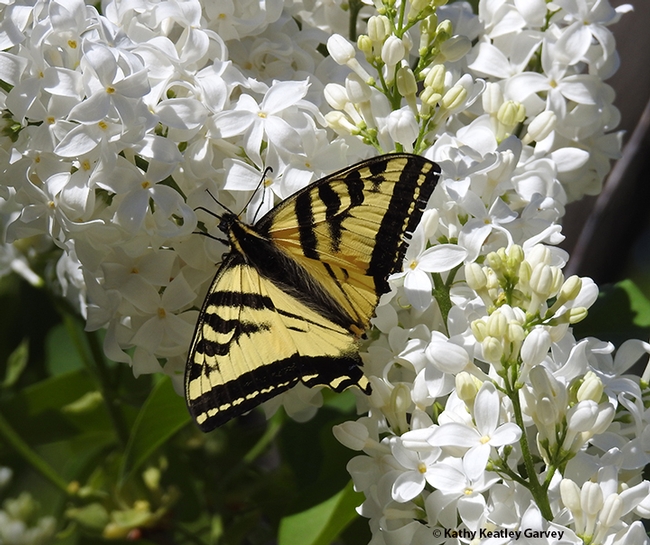
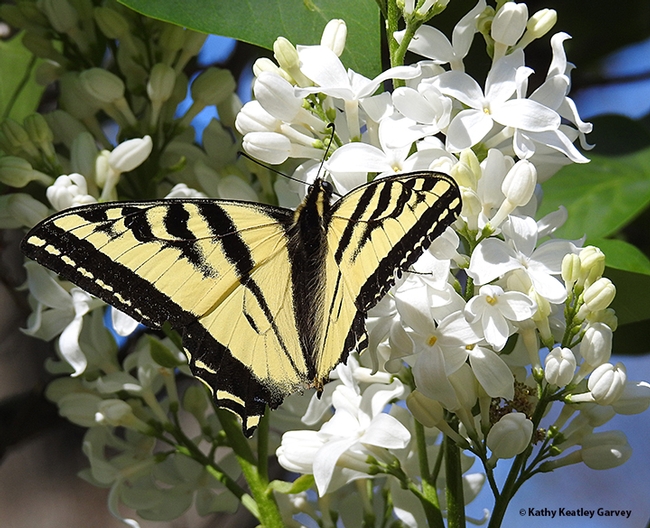
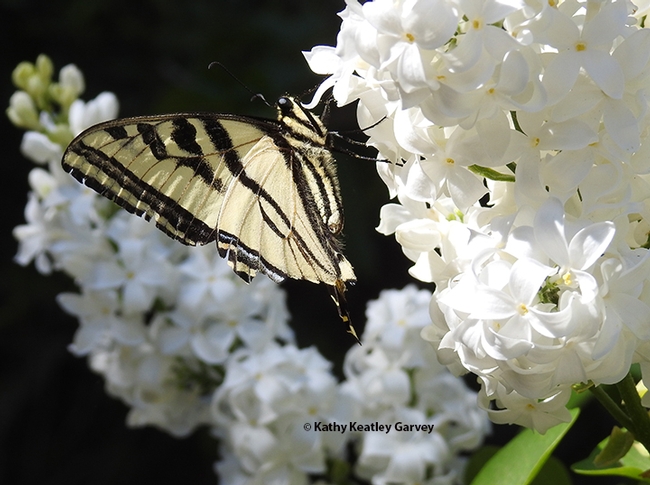
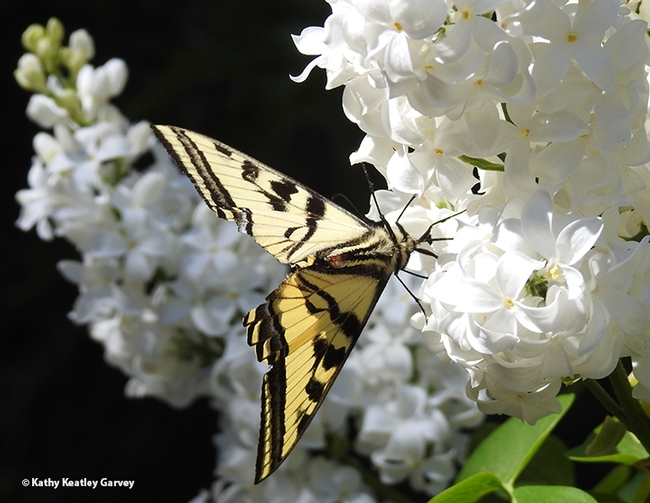
- Author: Kathy Keatley Garvey
So here, you are, a Western Tiger Swallowtail sipping nectar from a Mexican sunflower.
You are a Papilo rutulus. And your menu choice? A delicate orange beauty from the sunflower family: a Tithonia rotundifolia.
Ah, the sky is blue, the nectar is excellent, and all is RIGHT with the world.
Whoa!
What was that?
Something is WRONG with the world.
A male territorial long-horned bee, probably Melissodes agilis, has his eyes on you. He is buzzing your wings as if you're a suspicious passenger plane and he's a military escort plane. No, not a military escort plane, a fighter plane! He has no intention of escorting you anywhere but off the flower.
Mr. Melissodes yells "Get off that flower; I'm saving it for my own species." He buzzes your head. He buzzes your right wing. He buzzes between your wings.
"Get off that flower now! Hear me?"
"Excuse me, I am eating my breakfast. Wait your turn, please."
Mr. Melissodes roars up over the petals. You see his tiny, furious face as he ascends into your space.
"Get off now!"
"Well, if you insist," you say, scrambling for safety. "I can take a hint."
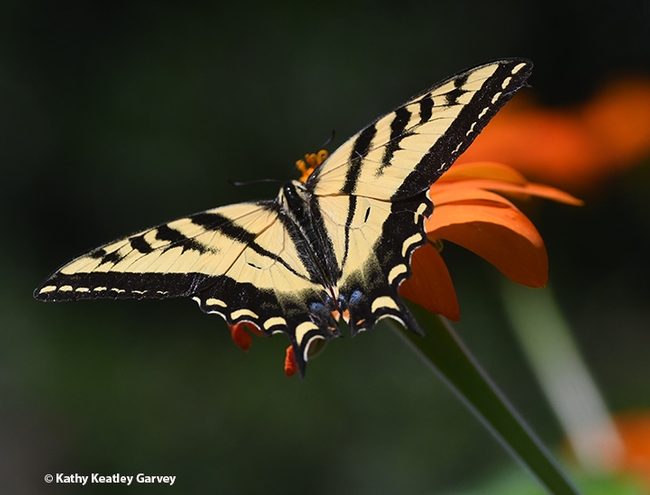
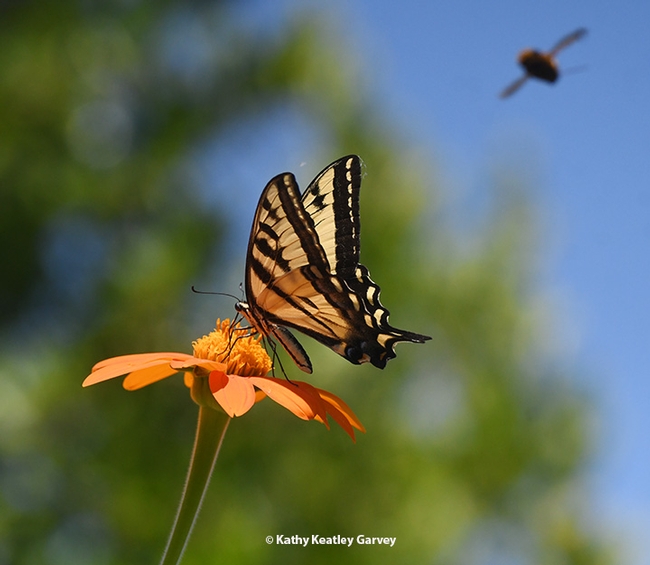
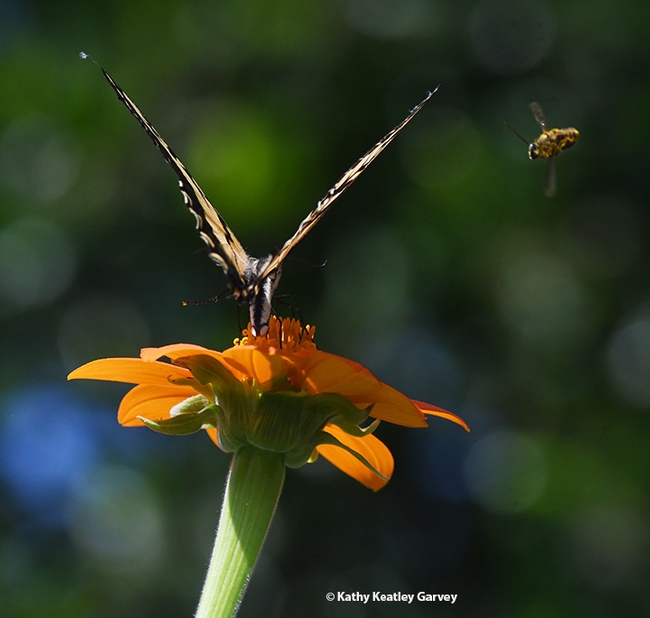
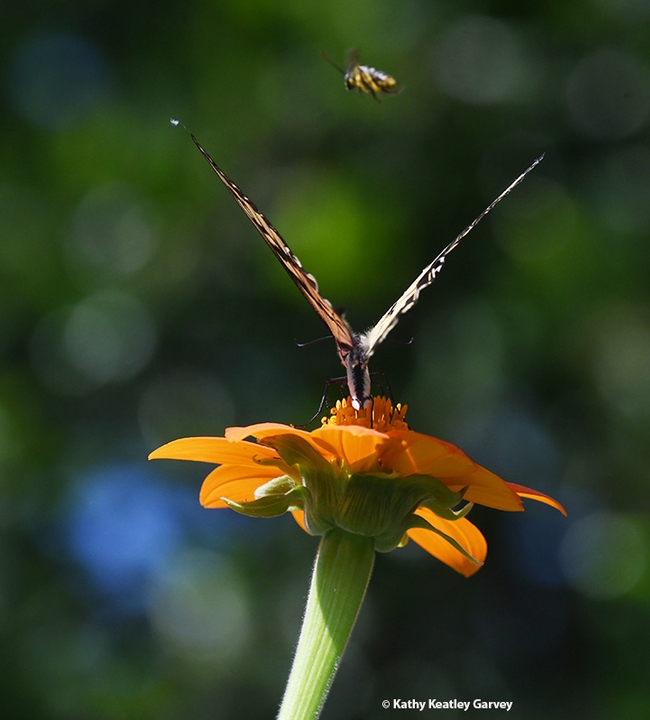
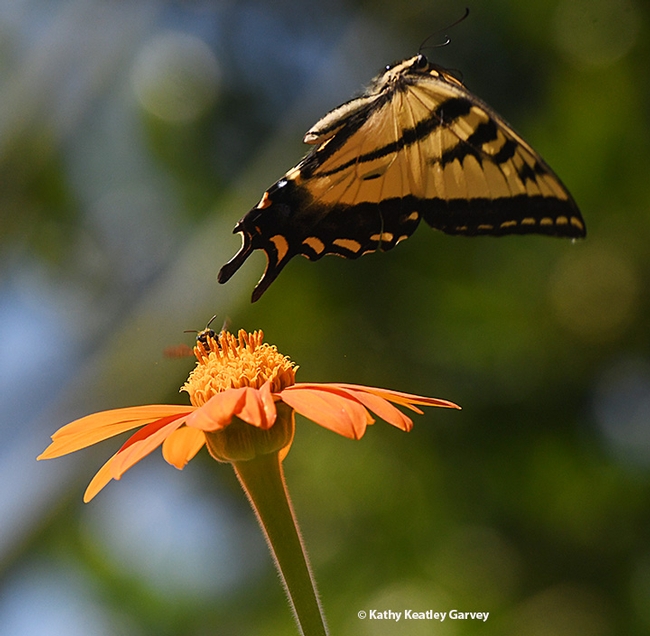
- Author: Kathy Keatley Garvey
Have are you faring during the COVID-19 crisis?
If you have a pollinator garden--or access to you--and a camera, you can step out of The Great Indoors and enjoy The Great Outdoors.
A newly eclosed Western Tiger Swallowtail, Papilio rutulus, however, can take your breath away.
This one recently visited our butterfly bush, Buddleia davidii, in our pollinator garden. It fluttered across the garden and headed straight toward one bush: the aptly named butterfly bush.
Wikipedia tells us: "The genus is found in four continents. Over 60 species are native through the New World from the southern United States south to Chile, while many other species are found in the Old World, in Africa, and parts of Asia, but all are absent as natives from Europe and Australasia. The species are divided into three groups based on their floral type: those in the New World are mostly dioecious (occasionally hermaphrodite or trioecious), while those in the Old World are exclusively hermaphrodite with perfect flowers."
There's a movement afoot NOT to plant Buddleia davidii (see the North American Butterfly Association's "The Great Butterfly Bush Debate"), but we've had ours for a decade, we keep it under control, and we love it for its beauty, its aroma, and its ability to draw a wide variety of insects.
Insects love it, too.
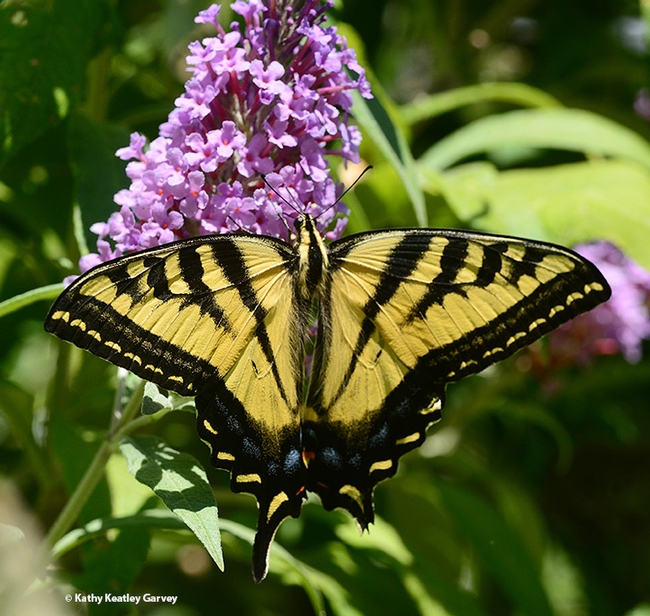
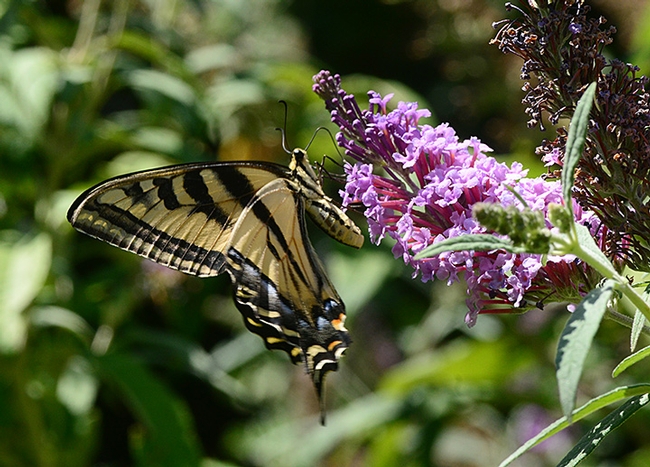
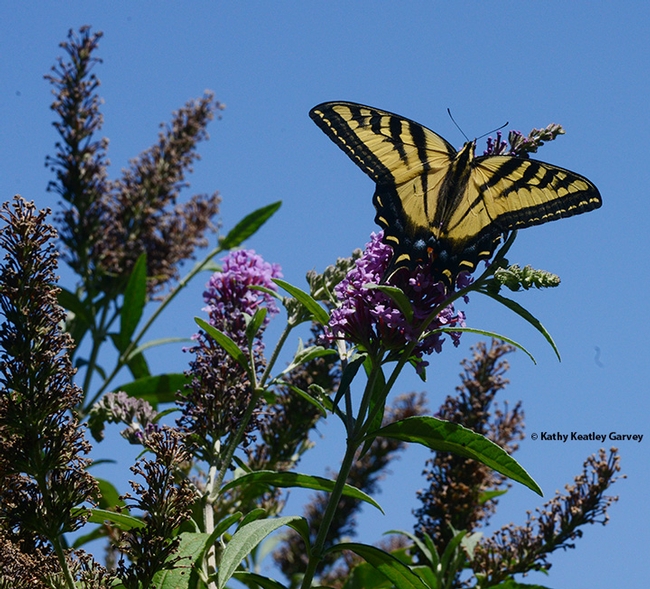
- Author: Kathy Keatley Garvey
The "Tiger King" has nothing on the Western Tiger Swallowtail.
The colorful yellow and black butterfly, Papilio rutulus, reigns supreme. We saw this one last week at the Ruth Storer Garden in the UC Davis Arboretum and Public Garden.
"The Western Tiger Swallowtail is basically a species of riparian forest, where it glides majestically back and forth along the watercourse," writes butterfly guru Art Shapiro, UC Davis distinguished professor of evolution and ecology, on his website. "It has expanded into older urban neighborhoods where several of its host genera are grown as shade trees, and behaves as if the street were a watercourse. In the high country and on the Sierran east slope its usual host is Aspen."
We've seen it glide majestically and forage on everything from Verbena to lilacs (Syringa) to the butterfly bush (Buddleja). What a treat--especially during the coronavirus pandemic! When you visit the Arboretum, keep your social distance and wear facial masks, per the Yolo County Health Department's current precautions.)
Meet the real Tiger King: the Western Tiger Swallowtail.
